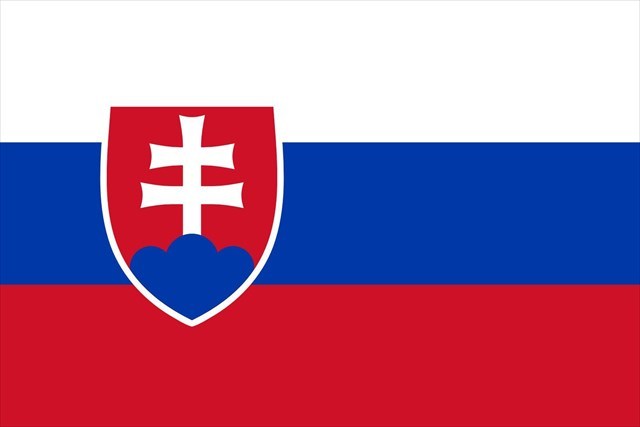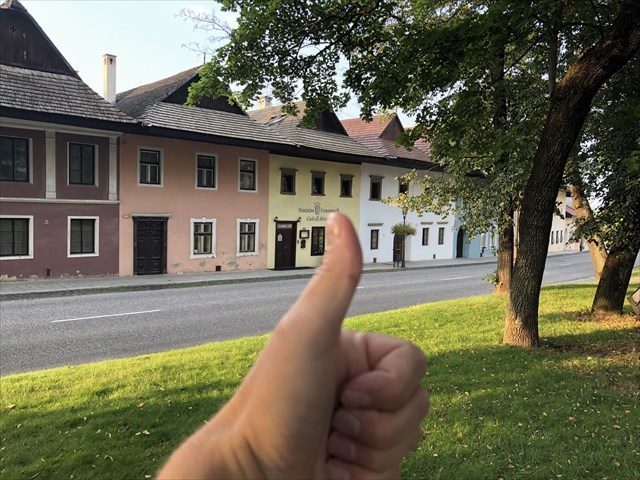
Pamiatková rezervácia Spišská Sobota
Spišska Sobota vznikla v prvej polovici 12. storočia na tzv. Veľkej ceste (Via magna). Povodne slovanske osidlenie bolo kolonizovane nemeckym obyvateľstvom z uzemia južneho Ryna. Najstaršia pisomna zmienka o Spišskej Sobote pochadza z roku 1256 a v roku 1271 jej boli udelene mestske prava. Nazov bol odvodeny od trhov organizovanych pravidelne v sobotu (de Foro Sabathe). Obyvatelia neboli roľnikmi a vyznamne postavenie mestečko nadobudalo prave ako trhove a remeselne centrum. Artikuly pre najstaršie cechy sukennikov, masiarov, šustrov a krajčirov, ktore tu vznikli, vydal poľsky kraľ Žigmund August v roku 1551.
V druhej polovici 15. storočia a v priebehu 16. storočia mesto hospodarsky prekvitalo. V rokoch 1412 – 1772 bolo v zalohu Poľska. Prosperita mesta sa odzrkadlila aj v stavebnom ruchu. Bol vybudovany mestsky vodovod, renesančna radnica a samostatna kamenna zvonica. Dominanta namestia - Kostol sv. Juraja prešiel vyraznou gotickou prestavbou. Historicke namestie v tvare šošovky bolo vytvorene radovou zastavbou jednoposchodovych kamennych meštianskych domov a prizemnych remeselnickych a garbiarskych kamennych domčekov na okrajovych uliciach namestia. V čase protihabsburskych povstani si Sobotčania pospajali hospodarske budovy do suvislej linie a vytvorili tak opevnenie. Na miestach vstupov do mesta vybudovali kamenne poschodove brany. Z byvaleho opevnenia sa dodnes zachovalo len niekoľko hospodarskych objektov.
Napriek viacerym požiarom zaznamenavalo mesto hospodarsky rast aj v priebehu 17. a 18. storočia. Koncom 19. storočia sa tu udomacnila priemyselna vyroba. Vznikli tu menšie tovarničky na spracovanie ľanu a kovov, sukromna elektrareň, palenica a pila, Sporiteľňa 5 hornych spišskych miest, filialka kežmarskej Zipser Bank a katolicka Ľudova banka.
V roku 1876 sa Spišska Sobota stala mestom so zriadenym magistratom a bola aj sidlom volebneho obvodu, okresneho sudu, daňoveho uradu a inych menšich uradov. O svoje postavenie prišla otvorenim Košicko-bohuminskej železnice v roku 1871, ktora viedla cez Poprad. Ten vďaka železnici prevzal veduce hospodarske a priemyselne postavenie v regione.
Od 1. januara 1946 je Spišska Sobota sučasťou mesta Poprad a tvori jeho časť mesta. Pre svoj zachovany stredoveky urbanisticky charakter bola v roku 1950 vyhlasena za mestsku pamiatkovu rezervaciu. Po rozsiahlej obnove v rokoch 1998 – 2000 sa stala jednym z najnavštevovanejšich a najkrajšich stredovekych miest na Slovensku.
ULOHA:
Vaša úloha je vskutku jednoduchá.
Nájdite meštianske domy č.50-70 zo 16.-17.storočia, sú príkladom špecifickej spišskej architektúry - dvojpodlažné domy s predsadenými sedlovými strechami so štítmi podlomenicami, kryté šindľovou krytinou.
Urobte fotku seba alebo len vašej ruky s palcom nahor ako na priloženej fotografii, pričom meštianske domy musia byť v pozadí.


The Town Conservation Reserve of Spišská Sobota
Spišska Sobota was founded in the first half of the 12th century on the so called The Great Road (Via magna). The former Slavic settlement was colonized and later populated by the German settlers tracing their origins to the Southern RhoneValley. The oldest written mention of Spišska Sobota dates back to the year of 1256, whereas in the year of 1271 it was granted the town rights. The title of the town was derived from the open-air markets held regularly on Saturdays (c. f. de Foro Sabathe). The local inhabitants were not farmers and the townlet started to gain its significant position by establishing itself as a market and craftsmanship centre. The royal decrees for the oldest guilds of hand-loom weavers, butchers, cobblers, and tailors which originated at Spišska Sobota were enacted and introduced by Sigismund II. Augustus of Poland in the year of 1551.
In the second half of the 15th century and in the course of the 16th century the town flourished economically. Between the years of 1412 – 1772 it was pledged to Poland. The civic boom of the town was to be perceived in the area of structural engineering and town development. There was a public water main built, the Renaissance period Town Hall and a detached stone belfry (campanile). The prismatic jewel of the Square – St. George’s Church, underwent a significant Gothic overhaul. The historic square resembling the shape of a lens being formed by the line of terraced-houses comprises of one-floor stone Burgher houses and at the street-level situated craftsmen-inhabited as well as tanners-inhabited stone lodges which were to be found in the peripheral streets of the main square. During the anti-Habsburg revolts ant rebellions the citizens of Spišska Sobota interconnected the farm buildings into an unbroken line, by means of which a kind of fortification system was created. In places of town entrances there were stone multi-storey, high gates built. There have been only a few outlying farm buildings preserved up to now which in the past constituted the former fortification ramparts.
In spite of several fires, the economic life of the city boomed even during the course of the 17th and 18th centuries. At the end of the 19th century minor manufacturing facilities, manufactories were established. Smaller manufacturing plants were founded to process linen and metals, not to forget to mention a private power plant, a local distillery a wood mill, the savings bank of five Upper-Spiš towns, an affiliated branch of the Zipser Bank and Catholic People’s Bank (The Catholic Volksbank).
In 1876 Spišska Sobota became a town having its own Board of Councillors, Magistrates and at the same time it was the seat of the constituency, district court, tax office and other public authorities of lesser importance. Spišska Sobota lost its dominant position by virtue of testifying to the Košicko-Bohumin Railway being opened in 1871 which ran through Poprad. Hence, it was the City of Poprad which took over the leading position to become an economic and industrial leader within the greater region.
Since January 1, 1946 Spišska Sobota became included as a city borough, while remaining to be its constituting part up to now. Because of its well-preserved and well-kept medieval urban characteristics, it was in 1950 declared as The Spišska Sobota Town Conservation Reserve. Following its extensive refurbishments between the years of 1998 – 2000 it became one of the most frequented and the prettiest medieval towns of SLOVAKIA.
GOAL:
In fact, your task is simple.
Find the Burgher houses No.:50-70 dating to the 16th - 17th centuries bear a testimony to the specific, the Spiš Region inherent architecture - multi-floor buildings accompanied by massive gable-style shingle roofs and extra-long gargoyle rainwater spouts and sputters.
Take a photo of yourself or just your hand with your thumb up like the attached foto with Burgher houses in the background.


Denkmalschutzgebiet von Spišská Sobota
Spišska Sobota (dt. Georgenberg) wurde in der ersten Halfte des 12. Jahrhunderts entlang der sogenannten Grosen Strase (Via Magna – einem wichtigen Verkehrsweg im Reich von Osterreich-Ungarn, auf der Personen und Post befordert wurden) gegrundet. Die ursprunglich slawische Bevolkerung wurde spater mit Deutschen aus dem Gebiet des sudlichen Rheinlandes kolonisiert. Die alteste schriftliche Erwahnung von Spišska Sobota stammt aus dem Jahr 1256. Im Jahr 1271 erhielt die Stadt ihre Stadtrechte. Der Stadtname wurde von den Markttagen abgeleitet, die regelmasig samstags stattfanden. (de Foro Sabathe – Samstagsmarkt, Spišska Sobota – Zipser Samstag). Die Einwohner waren hauptsachlich in der Landwirtschaft beschaftigt. Einen wichtigen Platz in der Region nahm die Kleinstadt gerade als Zentrum von Handel, Verkauf und Handwerk ein. Die altesten hier angesiedelten Stadtzunfte der Weber, Fleischhauer, Schuster und Schneider bekamen im Jahr 1551 vom polnischen Konig Sigismund August ihre Artikel.
In der zweiten Halfte des 15. Jahrhunderts und im Laufe des 16. Jahrhunderts bluhte die Stadt wirtschaftlich auf. Zwischen 1412 und 1772 gehorte sie zu den Zipser Pfand-Stadten Polens. Der stadtische Aufschwung zeichnete sich vor allem in der regen Bautatigkeit ab. Die Stadt bekam eine neue Wasserleitung, das Renaissance-Rathaus sowie das allein stehende Glockenhaus aus Stein. Auch die Dominante auf dem Hauptplatz, die Kirche des Hl. Georges, wurde im gotischen Stil umgebaut. Der Hauptplatz in Form einer Linse wurde mit einstockigen Burger-Reihenhausern aus Stein bebaut. Dazu kamen noch einige eingeschossige, ebenso aus Stein gebaute, Kleinhauser der Handwerker und Gerber, in den Seitenstrasen am Rande des Hauptplatzes, hinzu. In der Zeit der antihabsburgischen Aufstande schlossen die Bewohner von Spišska Sobota ihre Wirtschaftsgebaude zu einer einzigen durchgehenden Linie zusammen und schufen so eine Befestigung. An der Stelle der Eingange in die Stadt bauten die Stadtbewohner stufenartige Tore aus Stein. Von der damaligen Stadtbefestigung sind bis heute nur vereinzelte Wirtschaftsobjekte erhalten geblieben.
Trotz einigen Branden verzeichnete die Stadt im 17. und 18. Jh. einen wirtschaftlichen Aufschwung. Ende des 19. Jahrhunderts siedelte sich hier industrielle Produktion an. Es entstanden kleine Betriebe zur Leinen- und Metallverarbeitung, ein Privatkraftwerk, ein Brandhaus und Sagewerk, die Sparkasse der funf Stadte in der Oberen Zips sowie eine Niederlassung der Zipser Bank aus Kežmarok (dt. Kasemarkt) und die Katholische Volksbank.
1876 wurde Spišska Sobota zur Stadt mit einem Magistrat, sowie zum Sitz eines Wahlkreises. Auch das Bezirksgericht, das Steueramt und andere kleinere Behorden waren hier angesiedelt. Um ihre zentrale Stellung kam die Stadt im Jahr 1871, als die durch die Stadt Poprad fuhrende Eisenbahnstrecke Bohumin – Košice eroffnet wurde. Denn dadurch ubernahm dann Poprad den fuhrenden wirtschaftlichen und industriellen Takt in der Region.
Seit dem 1. Januar 1946 gehort Spišska Sobota als Stadtteil zur Stadt Poprad. 1950 wurde er zum stadtischen Kulturdenkmal erklart. Dies hat der Stadtkern vor allem dem mittelalterlichen urbanen Charakter zu verdanken. 1998 – 2000 wurden grose Sanierungsarbeiten in Spišska Sobota durchgefuhrt. Seitdem gehort der Stadtteil zu den schonsten und am meisten besuchten mittelalterlichen Stadten slowakeiweit.
AUFGABE:
Ihre Aufgabe ist ganz einfach.
Finden Sie die Bϋrgerhäuser Nr.:50-70 aus dem 16.-17.Jh. Die sind ein Beispiel fϋr die regionaltypische Architektur der Zips-Region, die sich durch mehrstöckige Bauten mit robusten Spitzdächern aus Schindeln und mit langen Wasserspeiern auszeichnet.
Machen Sie ein Foto von sich selbst oder nur von Ihrer Hand, mit dem Daumen nach oben wie auf dem beigefügten Foto, mit Stadthäusern im Hintergrund.

Zdroj / Source / Quelle:
https://www.poprad.sk/spisska-sobota.phtml?id3=728
Virtual Rewards 2.0 - 2019/2020
This Virtual Cache is part of a limited release of Virtuals created between June 4, 2019 and June 4, 2020. Only 4,000 cache owners were given the opportunity to hide a Virtual Cache. Learn more about Virtual Rewards 2.0 on the Geocaching Blog.